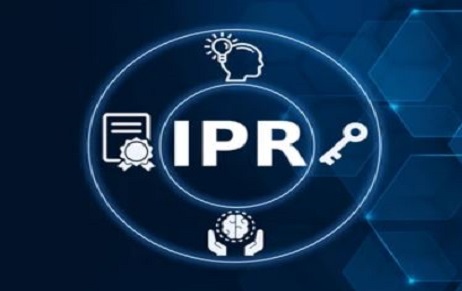Introduction In the realm of obtaining a patent right, conducting a ‘novelty search’ stands as…
Korea’s Biggest Credit Card Firm Wins Patent For Blockchain Credit System
INTRODUCTION
The word “Blockchain” is one of the most trending buzzwords of this decade. Everyone is talking about it. So, this term is worth the discussion in order to explore how it works and its potential application in this fast changing environment.
1. About Blockchain Technology
a. What is blockchain?
The concept of blockchain can be understood by drawing an analogy from Google spreadsheets or MS Excel (Windows). This spreadsheet is shared among different networks of computer, where everyone has a copy of it. The spreadsheet contains information of the transactions committed by real people. Anyone on the network can access that spreadsheet but no one can edit it. This is Blockchain.[1]
A blockchain is basically a chain of blocks that contains any set of information.
b. How does it work?
Blockchain was originally intended to timestamp digital documents so that it is not possible to backdate them. A blockchain is a distributed ledger that is open to anyone in the network. Once a data is recorded inside a blockchain, it is completely difficult to change it. Each block contains some data, the hash of the block and the hash of the previous block. The data stored inside the block depends upon the type of blockchain. A hash has a unique identifier for a particular set of block with all of its contents. When a block is created, its hash is calculated. The hash will change with the contents of the block. As a result, in case of any change in the contents of the block, the hash will change, and the block would not be identified as the same original block. Each block also contains the hash of the previous block. The first block of the block chain does not contain any hash of a previous block and is called as genesis block. If information in any of the block is tampered with, it will cause the hash of the block to change. As a result, the following block having the original hash of the changed block will not match with the new hash of the changed block. As a result all the blocks subsequent to the changed block will be invalid. And the information will be secured.
To strengthen the system further, the blockchain employs another methodology known as proof of work. It is a mechanism that slows down the creation of new blocks into the chain. For instance, in the case of Bitcoin, it requires around 10 minutes to calculate the proof of work and add new block to the chain. This proof of work mechanism makes it very hard to tamper with the blocks, because if one block is tampered with, the proof of work for all the following blocks will be needed to be calculated again[2].
2. About The Firm
Since its inception as Shinhan Bank in 1982, Shinhan Financial Group (SFG) has committed itself to innovations and as a consequence of which the group has posted growth in business year after year. As Shinhan Bank, the business entity was focussed upon strengthening banking business solution and to find means to expand business lines in the financial industry[3].
Shinhan Card Co. is another company in the SFG. Launched on Oct. 1, 2007 upon merger between LG Card and Shinhan Card (new), Shinhan Card has now become on of the top players of the market and has issued around 15 million cards till date[4].
3. About Blockchain Credit System
Conventional credit transactions were made through VAN (Value Added Network) or PG (Payment Gateway), which connects consumers, merchants and card companies. Therefore, in the conventional method, the VAN company or the PG company brokers the transaction and acquires the commission according to the number of transactions, the fee for the credit card merchant is lowered. It is difficult to bypass the VAN company or the PG company. This led to the adoption of Blockchain Technology in such credit systems[5].
The Blockchain Credit System could usher in cardless credit transactions that would see users of the system make payments using apps on mobile devices. In such a development, the invention would disrupt the traditional card system based on three intermediaries: the credit card company, a value-added network (VAN) service provider and a payment gateway[6].
4. About The Patent
Shinhan Card Co. has recently been granted a patent[7] based on the application of blockchain technology on the credit system. Titled as “Credit virtual money generation device and credit virtual money management device”, the invention is basically a money generation device comprising of three distinct units. First, a blockchain generation unit for generating a blockchain, which includes virtual money generated according to a credit limit of a consumer, and for updating the blockchain according to the payment history of the consumer. Second, an account management unit for managing multi-signatures of a plurality of accounts sharing the blockchain. And third, the transaction generation unit for storing a transaction condition corresponding to each account, which can be more than one, and proceeding with payments using the blockchain according to the transaction condition[8].
a. The Claim
The patent document contains 22 claims in total, with Claim 1, 8, 15 and 17 as independent claims (4). These claims are associated with the processor, a communication unit and a computer – readable recording medium. Shinhan Card is now seeking to expand the credit patent to Europe, the U.S., Japan, China, Vietnam and Indonesia[9].
5. Impact Of The Patent
In recent years, attempts have been made to implement a transaction process that does not have a VAN company or a PG company. To lower the merchant commission fee by using an APP (Application) application payment method has a limitation that the account transfer method is not a credit transaction . Therefore, consumers who are willing to pay for credit card usage and credit may have the inconvenience of consuming only within the account balance through the payment of the app-to-app payment.
Application of this patent will enable the cardless credit transactions that would enable the users of the service to make payments by using applications on mobile devices, this will not only solve the present need of credit system on mobile applications, but also enable to bypass VAN and PG networks as well[10].
Conclusion
The patent on application of Blockchain technology in credit systems has unleashed a new revolution that has not only reduced the cost of transactions, but has also brought efficiency and security in transactions by implementation of such technology. As this technology gets absorbed in the market, customers will no longer be required to pay transaction charges, thereby reducing the burden of costs upon such customers.
Author: Madhur Tulsiani, L. L. B. IInd Year, Rajiv Gandhi School of Intellectual Property Law, I. I. T. Kharagpur , Intern at Khurana & Khurana, Advocates and IP Attorneys. In case of any queries please contact/write back to us at [email protected]
[1] https://medium.com/coinmonks/what-the-hell-is-blockchain-and-how-does-it-works-simplified-b9372ecc26ef
[2] https://www.youtube.com/watch?v=SSo_EIwHSd4
[3] http://www.shinhangroup.com/en/introduce/history.jsp
[4] http://www.shinhangroup.com/en/introduce/groupIntroduce1_02.jsp
[5] https://patents.google.com/patent/WO2019107654A1/en?q=Blockchain&q=Credit&q=System&assignee=shinhan
[6] https://www.coindesk.com/koreas-biggest-credit-card-firm-wins-patent-for-blockchain-credit-system
[7] https://patentimages.storage.googleapis.com/48/ec/c0/42c3fbb1ab7c0f/WO2019107654A1.pdf
[8] https://patents.google.com/patent/WO2019107654A1/en?q=Blockchain&q=Credit&q=System&assignee=shinhan
[9] https://www.fxstreet.com/cryptocurrencies/news/shinhan-card-wins-a-patent-for-blockchain-payment-system-201907170055



